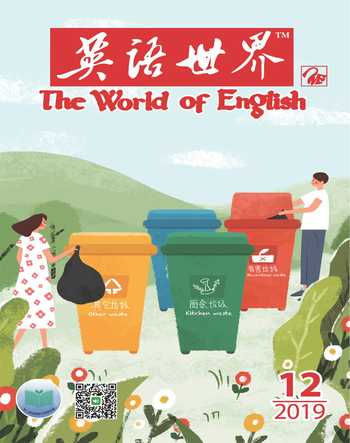Global Challenges for the New (Digital) Childhood 信息时代全球儿童面临的新挑战
乔丹·夏皮罗
Take a moment to think about the discordant1 connections which now expose people to others in faraway places—satellite signals, fiber-optic2 cables, television and radio waves broadcast our differences to every corner of the globe.
In Philadelphia, I take sips from a big mug of morning coffee, the orange-yellow sunrise glaring-in through the window to the right of my desk. I’m video chatting with a friend in Sarajevo. For him, it’s lunchtime. He nibbles on “pita.” Not the flat-bread that my kids and I like to dip into hummus3, but a savory pastry4 pie that’s often called burek.
Information networks bring us together technologically. But the encoded signals sent back and forth do not facilitate an experience identical to being in the same place. Communication is quick and efficient, but the affective stimuli, which shape our moods and dispositions5—and provide the foundation for empathy—remain disjointed.
For us, it’s just a conversation. But look at the same phenomenon from a macro perspective—consider all the images, words, and stories that people now encounter. Worldwide, there are more than 4 billion internet users; each spends an average of 6 hours per day using devices which enable these oddly dissonant connections. Things can become so quickly entangled that it’s easy to imagine that the World Wide Web was spun by an apathetic spider. We have all metamorphosed6 into a global community, but we’ve yet to unravel all the potential intellectual, social, affective, and emotional knots.
The challenge becomes even more acute when it comes to education and childrearing. To live and thrive in this new world—to confront and adapt to its unique frictions and challenges—today’s kids will need to develop a capacity for connected thinking and macro-mindedness. These distinct cognitive and social-emotional skills are the prerequisite7 for understanding rapidly changing geopolitical climates, for making sense of a globalized economy, and for contributing to a worldwide community. Kids need to be tolerant of diversity, respectful of difference, but also alike enough to manage constant connection. Grownups need to teach them how to mediate the tension between preserving heterogeneous8 cultures and adopting homogeneous9 protocols10.
That’s why I wrote The Joan Ganz Cooney Center Guide to Digital Play for Global Citizens. I wanted to help adults prepare kids for a world that’s governed by new technological, economic, and geopolitical paradigms11. I wanted to introduce educators, youth development leaders, and parents to innovative tools which can help kids learn about, understand, and engage with our connected world. After all, academic knowledge and vocational skills are useless if they can’t be leveraged12 by collaborative, caring, compassionate, creative, and confident global citizens.
Divided into three parts, the guide introduces ready-to-use resources to 1) help kids build awareness of themselves and the world around them, 2) recognize and investigate the history, as well as the complex, systemic causes of contemporary issues ranging from economic inequality to global conflict to cultural diversity and inclusion, and 3) use digital play to explore the issues around climate change and the our relationship natural world.
But why a guide to digital play? Because digital play is a great way to teach these lessons. While today’s children are playing online, they are also learning to be comfortable with a specific technological worldview. They’re developing the confidence to easily operate and experiment with networked tools. They are applying higher order13 thinking skills within virtual environments. They are also becoming acclimated14 to subtle social cues and nuanced15 behaviors. They’re procuring habits-of-mind for a connected world.
Child development and education experts are both always talking about how young people learn to make use of language, knowledge, and academic content through play, and within the context of lived experience. Although we often think of “context” as if it were some sort of abstract cultural or historical zeitgeist, the reality is much simpler. For humans, context is all about how we use specific sets of tools to intellectually, emotionally, economically, and materially fabricate16 our world. Digital tools are the new context.
From exploring boundaries, borders, and geography; to developing empathy and understanding of diversity; to developing a sense of curiosity and wonder about nature; this guide is meant to introduce practical, ready-to-use resources and techniques for using digital play to promote the breadth of skills required for true global citizenship.
花点儿时间想一想现有的那些杂乱的连接手段,它们可以把人们的生活展示给远方亲朋——卫星信号、光缆、电视和无线电波,把人们方方面面的不同传播到地球的每一个角落。
在费城,太阳刚刚升起,橘黄色的阳光穿过窗户落在桌子右侧,我从大马克杯里一口一口啜饮着早餐咖啡。我正在和一位萨拉热窝的朋友视頻聊天。他那里是午餐时间,他正小口啃着他的皮塔饼——不是我和孩子们喜欢蘸鹰嘴豆泥吃的那种扁面包,而是一种咸味的油酥馅饼,通常叫作burek。
信息网络从技术层面把我们聚在了一起。然而,来回传输的编码信号并不会让我们获得和真正共处一地完全相同的体验。交流变得快速而高效,但情感刺激仍然断裂——正是那些刺激激发塑造了我们的情绪和性情,提供了同理心所需的基础。
对我和朋友来说,这不过是一次普通的谈话。但请从宏观视角审视同样的现象,思考人们现今面对的所有图像、语言和故事。全球互联网使用者超过40亿,每人平均每天花6小时用各种设备建立此类古怪而杂乱的连接。各种事物会迅速纠缠在一起,不难让人想象万维网是一只冷漠的蜘蛛织就的。我们都已融入全球社区,但还没有解开智力、社交、情感和情绪上潜在的所有结扣。
在教育和育儿领域,这一挑战变得更为严峻。要在这个新世界生存和发展,面对并适应其中独特的摩擦与挑战,今天的孩子需要发展关联思维和宏观思维能力。想要理解瞬息万变的地缘政治环境,理解全球化经济,为人类共同体做出自己的贡献,具备这些独特的认知和社会情感技能是必要前提。孩子们不仅需要包容多样、尊重差异,彼此间还需要有足够的相似度去应对不断建立的连接。成年人需要教会孩子如何在保护各种异质文化与传承同质文化传统之间维持平衡。
这就是我写作《琼·甘茨·库尼中心全球公民数字游戏指南》的原因——我想帮助成年人为孩子做好准备去面对一个由新的技术、经济和地缘政治模式所控制的世界;想给教育者、青年发展领导者和家长们介绍创造性的工具,这些工具能帮助孩子了解、理解并融入这个连接无处不在的世界。毕竟,孩子若不能成为善于合作、关心他人、有同情心、有创造力而又自信的全球公民,那他们掌握的学术知识和职业技能就毫无用处。
这一指南分三部分介绍了一些现成可用的资源,这些资源的作用如下:(1)帮助孩子建立自我意识及对他们所处环境的意识;(2)对于当下从经济不平等到全球冲突乃至文化多样性和文化融合等种种议题,了解并探究它们的历史及其复杂的系统性成因;(3)利用数字游戏探索气候变化及我们与自然界的关系等议题。
但为什么特别为数字游戏写一本指南呢?因为数字游戏是教授这类课程的绝佳方式。今天的孩子在线上娱乐的同时,也在学着接受一种独特的技术世界观。他们在建立轻松操作和尝试联网工具的自信,在虚拟环境中应用高阶思维技巧,还开始习惯于微妙的社交暗示和行为差异。他们将养成互联世界所需的思维习惯。
儿童发展专家和教育专家都常常在谈论,年轻人如何在真实生活背景下通过游戏学习使用语言、知识及学术内容。提到“背景”,我们常常以为是某种抽象的文化或历史意义的时代精神,但实际简单得多。如何使用一套套具体的工具从智力、情感、经济和物质上建构我们的世界——对人类来说,背景就是与此相关的一切。现在,数字工具是新的背景。
从探索范围、边界和地理环境,到发展同理心和对多样性的理解,再到培养好奇心和对自然的敬畏之心,这一指南旨在介绍一些实用、可用的资源和技术,使用数字游戏来拓展真正的全球公民所需要掌握的技能。
(译者为“《英语世界》杯”翻译大赛获奖者)

